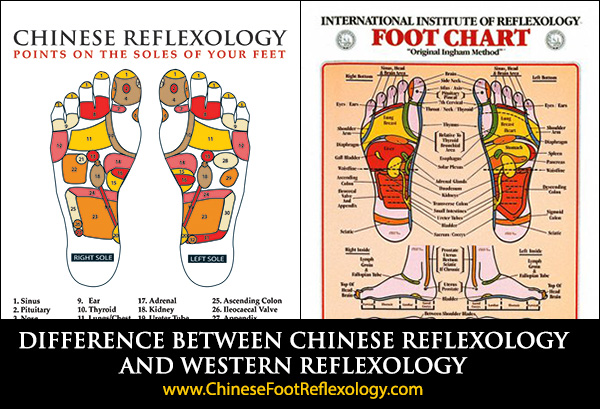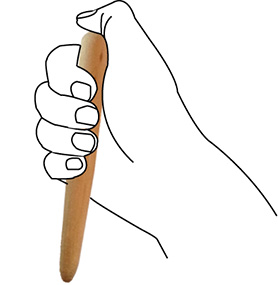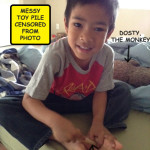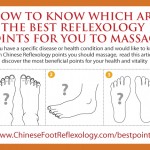One of the most common questions I get asked other than where to get a reflexology stick, is, “What’s the difference between the Chinese and Western styles of reflexology?” Read this article to learn the 5 key differences between Chinese Reflexology vs. Western Reflexology.

Image Source: International Institute of Reflexology poster available at www.reflexology-usa.net.
1. Point Location
Between the Traditional Chinese Method of Reflexology and the Ingham Method of Reflexology, there are many similarities when it comes to the location of reflexology points. However, when comparing reflexology foot charts, I’ve noticed the following differences (first description is for Chinese Reflexology, second description is for Western Reflexology):
- Heart (located below ball of foot vs. on ball of foot)
- Thyroid (located on ball of foot vs. big toe)
- Solar Plexus (more centrally located vs. off to one side)
- Stomach (located on inside edge of both feet vs. predominantly large area below ball of left foot)
- Pancreas (located on inside edge of both feet vs ball of left foot)
- Spleen (different shape)
- Liver (located on outer quadrant of right foot vs. large area under ball of right foot)
- Kidney (located higher and larger for Chinese)
- Adrenal (located directly above Kidney vs. on a diagonal above Kidney)
- Bladder (smaller than Western style)
- Sciatic Nerve (located on edge of calf vs. heel of foot)
- Uterus/Prostate and Ovary/Testes (much larger area than Western point)
I’m sure there are more differences, but these are the ones that stood out the most for me.
2. Massage Intensity
The Western style of reflexology is often a pleasant and enjoyable foot massage. Nobody ever uses the word, “pleasant” to describe Chinese Reflexology. Actually, that’s not true. One of my clients thanked me for the “very pleasant experience” after their first session. I think they found the experience pleasant in contrast to what they experienced at the doctor’s office.
So, while I myself may be quite pleasant (and modest too!), the actual Chinese Reflexology foot massage is usually quite intense. In the Western style of reflexology, when the client experiences pain, the reflexologist eases off.
In Traditional Chinese Reflexology, when a painful point is found, you head straight for the pain. You increase the pressure, intensity and duration of the stimulation of sensitive points, but this is done with a holistic approach, taking into account the client’s overall constitution, especially how well their excretory system is functioning, and their overall lifestyle too.
This is very similar to the old school style of Traditional Chinese Medicine, as opposed to the gentrified stuff practiced in zen-themed clinics throughout North America. Intense stimulation is practiced because it’s more effective and speeds the healing process.
One of my acupuncture professors is descended from a long line of Master Traditional Chinese Medicine doctors. When she inserts needles, she strongly manipulates them until you “feel the Qi”, which feels like a sharp and painful shock. It hurts, but it works. This professor successfully treats patients that other doctors and acupuncturists are unable to.
In Traditional Chinese Reflexology, the intense stimulation helps to clear energy blocks and sends healing Qi (energy) and blood to the affected area of the body.
Just in case I’m scaring you :), I want to assure you that in my Chinese Reflexology sessions, I always work within my client’s comfort level and will ease off it’s too intense. However, I’m always gently guiding my clients to increase the level of pressure.
3. Zone Theory vs. Energy Meridians
Modern Western reflexology is based on Zone Theory, originated by Dr. William H. Fitzgerald. In Zone Theory, the body is divided vertically into ten different zones, with the feet being divided in a similar fashion. Each zone on the foot then corresponds to the zone in the body.
Traditional Chinese Medicine is based on the principle of energy meridians. There are 12 primary channels where energy flows through your body. In Chinese Reflexology, the feet are considered the headquarters of the master control points for manipulating the flow of energy along these energy channels.
When energy is blocked, massaging the reflexology point helps to clear the disruption. When energy is low, stimulating the reflex point can help increase the flow of Qi (energy) and blood to support the body’s healing process. To learn more about Qi and how it relates to health, check out my article on the Nature of Qi.
4. Use of Tools in Reflexology
 Most Asian styles of reflexology incorporate the use of tools to stimulate the feet, whereas the Western style primarily uses fingers, thumbs and knuckles.
Most Asian styles of reflexology incorporate the use of tools to stimulate the feet, whereas the Western style primarily uses fingers, thumbs and knuckles.
In Chinese Reflexology, a small wooden stick is used to massage the reflexology points. The stick enables the practitioner to increase the intensity of pressure and it also allows them to feel small crystals or grains under the skin of the feet that you can’t feel with your fingers, knuckles or thumbs.
The crystals are comprised of uric acid and indicate energy blocks in the body. The 1/4″ tip of the reflexology stick enables you to focus the pressure into a small area and at a greater depth. This helps to locate and break up the crystals in the feet and clear the corresponding energy block.
5. Popularity
The Ingram method of reflexology is very popular in England, Australia, Canada and the United States. The Traditional Chinese Method is popular in Asia, especially China and Taiwan. Thailand also has its own style of reflexology that uses a stick, but this style differs from the Chinese method.
Chinese Reflexology can also differ amongst practitioners. It’s a lot like how there are many variations in martial arts even if it’s the same style (e.g. Kung Fu). The way to practice varies depending on who your sifu (teacher) was and who their teacher was, etc.
Most North American reflexologists learn a standardized method of reflexology based on the Ingham method. Thus, it’s generally quite easy to find a reflexologist who practices the Western style of reflexology.
In Chinese culture, there’s a tradition of keeping healing knowledge closely guarded. Just like with martial arts, unless you’re deemed a worthy student, the true secrets are never revealed to you.
My father used to teach Tai Chi, but he only taught in Chinese to other Chinese people who were “in the know” about his class. I remember my father was aghast when my brother and I told him that we had tried a Tai Chi class at the local YMCA. Dad told us we were learning rubbish and we would be better off learning nothing than learning incorrectly.
My acupuncture professor who is descended from the long lineage of master doctors also keeps the family secrets closely guarded. She uses techniques that are shared only with family members and possibly a few select students. The other students in her classes only get taught the stuff that’s in the textbook.
Sure, it’s an old fashioned approach, but I do respect this way of teaching because it ensures that knowledge is passed only to students who truly want to learn. In the past, this made a lot of sense because teachers could only teach a handful of students at a time. Thus, it made sense to only teach to the most committed.
Where to Find a Reflexologist Who Practices Chinese Reflexology
Because of this selective teaching and the language barrier, it’s actually rather difficult to find someone in an English speaking country who practices the Traditional Chinese Method of Reflexology.
Probably the next most common question people ask me is if I know anyone who practices real Chinese Reflexology in their area. Unfortunately, all I know of are a handful of practitioners in and around Toronto, Canada and myself in Northern California.
One of the things on my to-do list is to gather a list of everyone I know who practices Chinese Reflexology and post it online. That, and start training more people!
How to Learn More About Chinese Reflexology
Thanks to my background working in the Internet industry for a decade, I’ve figured out an effective way to teach people online.
And, because I was born and raised in Canada, I don’t feel the need to guard the “ancient secrets” to raise my standing in the community. I feel the world would be a much better place if I share my knowledge of Chinese Reflexology. I’ve heard from so many people all over the world how something they’ve learned from me made a huge impact in their lives and for that, I’m very appreciative.
And if you’d like to learn Chinese Reflexology for yourself, I do teach two online programs: a 6-week introductory course and a more intensive 6-month program. Both programs are taught online and you can click here to learn more about them.
In the meantime, I hope this article helps clarify the key differences between the Chinese style of reflexology and the Western style. In a nutshell, it’s all about point location, massage technique and the underlying theory. Regardless of whether it’s Chinese or Western, it’s always good to rub your feet.
Start massaging your feet right now! To download Chinese Reflexology foot charts and get a series of online mini lessons for free, click here for free Chinese Reflexology charts.



Interesting. I want to learn about Chinese reflexiology and it’s application in olur body. Good Day. God bless!
Thank you Eloisa!
interesting
Great article and best wishes with your teaching of Chinese Reflexology. I agree totally with the Chinese version of the foot map and also often use an reflexology stick on myself and clients where I think the reflex needs the work done. Enjoyed reading some of your articles, thanks. Marie
Thanks Marie!
For many years it has been my goal to learn how to regrow teeth (dead, broken or missing) and to tell the world how to do it. I have a mouthful of dead, broken teeth owing to malpractice, and in spite of “exceptionally good” dental hygiene. There is so much crime and injustice in what happened to me. None of this makes sense unless I fulfill my goal and share the knowledge with the world.
Years ago acupuncture helped with dental pain and related facial swelling, though I was there for life threatening health issues (most of my red blood cells were missing and I had heart arrhythmia and other problems too). I’ve been to dental Hell and I’m still there. I believe teeth can regenerate but don’t know how. Would you tell me if, in your opinion, reflexology can help regenerate teeth, nerves, pulp, dentin, enamel)?
My web page gives more details.
Thank you;
Marjorie
Has the summer 2015 Foundations Course already happened? I would love to be part of it, or the next one if I am too late. Please let me know. Thank you for all you share, I am loving it!
Awesome to hear that you are loving the reflexology! I have a new program on Chinese Reflexology Fundamentals planned for early 2016. I’ll be sharing details in a future newsletter. I hope to see you in the class!
I really appreciate your website and articles. I agree with most of what you said and have experienced Reflexology in Taiwan by a 5th generation healer – and it was extremely painful but effective. I also am certified in the Ingham method in US. I think the one thing you left out is that in the US..because Reflexology is not a licensed technique there are limitations placed on it and for now our focus must be on using Reflexology for stress reduction and relaxation. I am very interested in learning more about Chinese methods and meridians but as far as my practice goes the reflexed points can offer greater energy and balance in the body but also by inducing the relaxation response (by NOT causing pain…but rather helping the client achieve a deep state of relaxation) we are countering perpetual stress syndrome and assisting people with helping the body relearn what it feels like to be in a calm and relaxed state and give organs and tissues time and space to heal and renew. I know when I was in Taiwan my treatment was far from relaxing and I even had heart palpitations. I think both can be beneficial but they are helping in different ways. Thanks again!
Thank you for the thorough comparison between Eastern and Western styles of reflexology. I practice both, and find myself trying to explain the differences, particularly the amount of pressure delivered in the Chinese style! This article will help me give a more well-rounded answer. Thanks!
You’re welcome!
I had a reflexoligy treatment that was very painful but I believe that reflexoligy works and have had it done three times by the same person.
My question is four days after my last season my big toe started to hurt and was swollen. It went completely numb. It has been three weeks now and is still numb.
Is it possible that the trestment damaged a nerve?
I had her work on my feet again in hopes of getting the feeling back but it didn’t work.
Now I’m afraid do continue having reflexoligy if this is what can happen.
She also uses a small wooden tool and the trestment is painful.
Thank you,
I would recommend contacting the reflexologist and asking her.
I have been practicing reflexology ( Ingham method ) for over thirty years, and have enjoyed the wonderful benefits that it has brought to many.
So I feel that from what I read about the Chiinese method it can only enhance my knowledge and knowhow.
I would love to learn Chinese Reflexology!